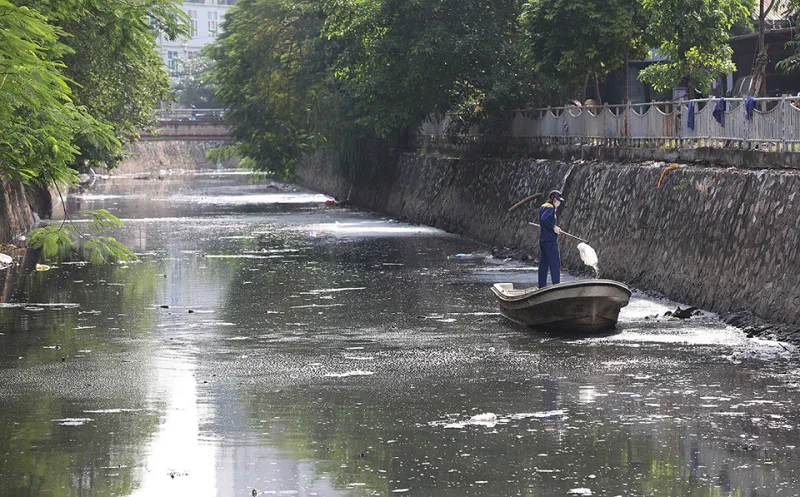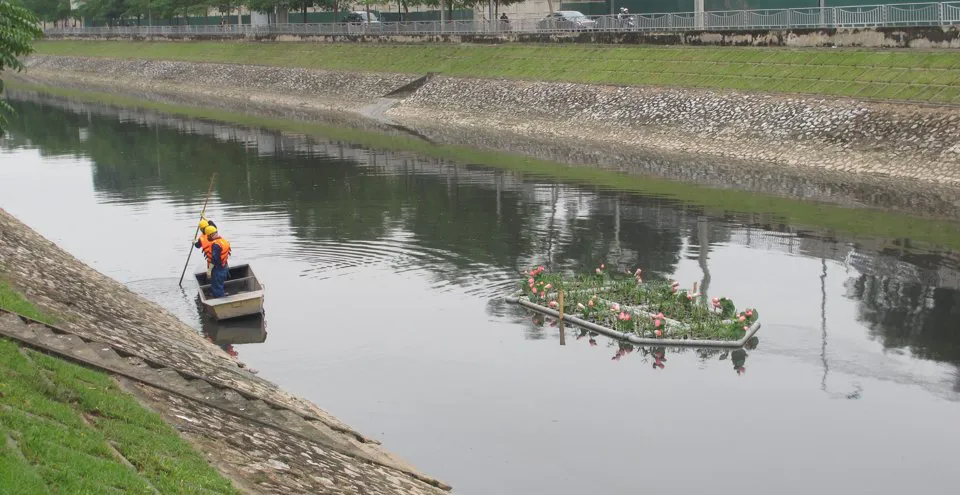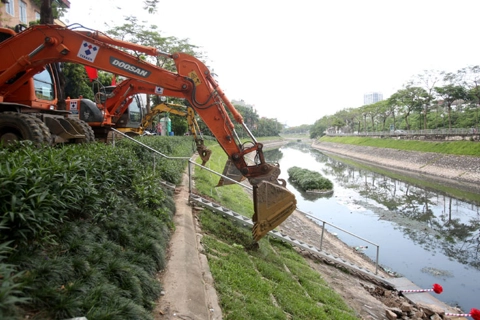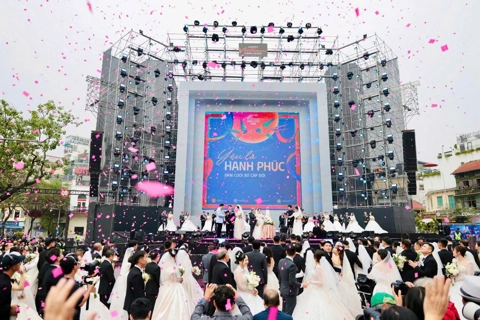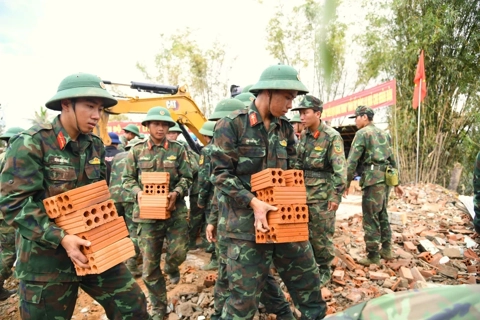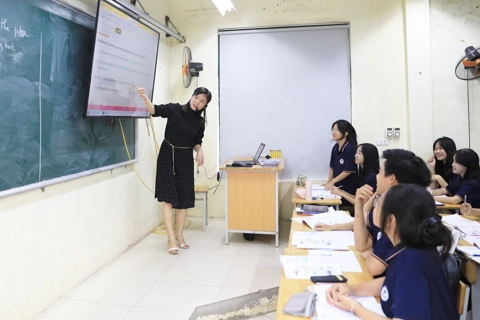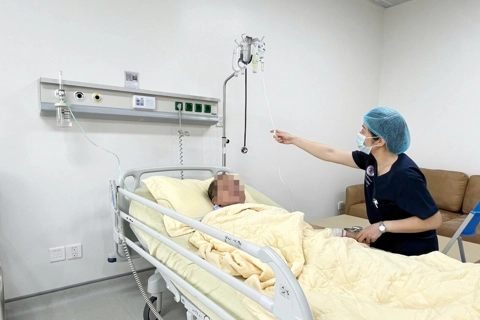Hanoi still needs more time to revive local rivers
All of Hanoi's small-scale, piecemeal river conservation projects have been a failure.
After decades of waste and sewage dumping, Hanoi's rivers are full of effluent and garbage. Any attempt to reclaim the rivers will require huge investment and long-term implementation.
Nguyen Thi Quy, a resident of Phuong Liet Ward in Thanh Xuan District, said the river is filthy because of the waste dumped by households and a market along its banks.
| An environmental worker removes trash from the Set River in Hanoi. Photo: Ngoc Thanh/The Hanoi Times |
If no action is taken, inner-city rivers, including To Lich, Kim Nguu, Lu, Set and Nhue, will remain polluted, posing a potential risk of infectious diseases carried by mosquitoes and mice, she told local media.
For years, local people have had to endure the terrible stench that the To Lich River emits in the summer, said Nguyen Thi Thoa, a resident along the river.
"If you walk along the river, you will see many sewers dumping effluent and dirt directly into the water," she said. "The river has not been flowing for a long time, so the pollution is getting worse and worse."
"It's getting worse, and on hot days it becomes unbearable. We must keep our doors and windows closed all day to avoid the bad smell," Thoa said. "The riverbank is the temporary dumping ground where garbage trucks and bins gather before being taken to the city dump."
Before the 1990s, the To Lich River, though a kind of sewer for the city, was relatively clean and fresh enough to support fish and other species. But Hanoi's rapid urbanization over the past 33 years, especially after the city's historic administrative boundaries were expanded in 2008, has worsened the situation.
The river now receives more than 150,000 m3 of domestic and industrial wastewater from households, factories and workshops, and handicraft villages. Its water has turned black.
To the southwest of the capital, the Nhue, Day, and Tich rivers are condemned to the same fate as the To Lich River, which has been heavily polluted by waste and sewage for years.
Nhue River, the iconic canal of Ha Dong District, receives wastewater from nearly 2,500 manufacturing, industrial, health and handicraft facilities.
Day River, the symbol of Ha Tay Province before it was merged with Hanoi in August 2008, has the worst water quality of all five rivers in the North.
On the Tich River, some sections have been stagnant for years due to mud, sludge, and waste.
The riverbeds have narrowed as people have built houses and factories on land reclaimed from the river.
These rivers carry a total of 400,000 m3 of domestic sewage and more than 1,000 m3 of garbage that is completely untreated.
Many projects have been undertaken to clean up the water, but success has been elusive. In the late 1990s, Hanoi began to clean up and embank the To Lich River.
For decades, Hanoi has been searching for the right way to reclaim the rivers and the environmental conditions around them.
Notable efforts include the transfer of water from the Red and Da rivers to the above-mentioned rivers and the installation of a nano-bioreactor and purification system. However, these are all temporary, short-term solutions.
Main problems and solutions
Restoring water quality in local rivers is one of the key environmental protection tasks Hanoi must accomplish in 2020-2025.
| Polluted To Lich River in Hanoi. Photo: Thanh Hai/The Hanoi Times |
According to Tran Thi Viet Nga, Dean of the Faculty of Environmental Engineering at Hanoi University of Civil Engineering, reclaiming the rivers would mean a lot for the city's urban development and ecological preservation.
"Rapid urbanization and population growth in Hanoi are the main causes of river pollution," she said. "We need a comprehensive, overall solution, not piecemeal ones that have proven to be inefficient and time-consuming."
"The rivers not only play an important role in the city's culture and history."
Accordingly, in 2022, the city's Department of Natural Resources and Environment is weighing a project focusing on revitalizing the rivers.
Professor Tran Hong Con, former lecturer at the University of Natural Sciences - Hanoi National University, said the first thing to do is to separate and treat all sewage sources dumped directly into the rivers.
"We can build small wastewater treatment plants in each residential area. Or we can collect and treat wastewater in one large station. The point is that all sewage must be treated before it is discharged into the rivers," he said.
In the case of the To Lich River, the former lecturer said that the river has neither current nor water sources to feed it. In the dry season, the river is only 20-30 cm deep.
"If we continue to treat wastewater, the river can replenish itself."
Wastewater needs to be controlled and treated before being discharged into rivers, said Dao Trong Tu, chief executive of the Vietnam Rivers Network, which is coordinated by the Center for Water Resource Conservation and Development.
"As the rivers have to carry a huge volume of wastewater every day, the pollution is getting worse," he said.
Echoing Associate Professor Con's ideas, the Vietnam Rivers Network's executive director said local authorities should use pumpers to feed water into the river and keep it flowing to prevent sludge condensation.
"Early ideas also mention feeding local rivers such as To Lich with water from the Red and Duong Rivers, but the city needs to study this solution intensively because changing the currents may endanger waterway traffic and geological conditions."
Le Dang Doanh, former director of the Central Institute for Economic Management, said Hanoi should learn from international practices in river restoration.
Local authorities and people should work together to protect the river's environment, he said, calling it the beginning of future success.

